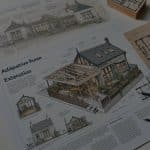Urban living has undergone significant shifts in the past few decades, with one of the most notable changes being the move towards more sustainable practices. Today, cities worldwide are recognizing that to effectively combat the negative impacts of climate change, they need to embrace sustainable developmental strategies. One of the vital components of such strategies is mixed-use real estate developments.
This approach brings residential, commercial, and public facilities into a single development, offering potential solutions for several urban development challenges. These include reducing urban sprawl, lowering greenhouse emissions, and improving public transport accessibility, to name a few. Let’s delve deeper into how mixed-use developments are reshaping urban living and reducing car dependency.
Also read : What are the best practices for water-efficient landscaping in suburban real estate developments?
The Concept of Mixed-use Developments
The idea behind mixed-use developments is relatively straightforward: integrate various real estate functions, such as residential, commercial, and public use, into a single, well-planned area. This approach is a stark contrast to the single-use zoning patterns that have dominated urban planning for most of the 20th century, resulting in cityscapes characterized by separate zones for housing, business, and public facilities.
Mixed-use development aims to create a more holistic, cohesive urban environment where people can live, work, and play in the same area. This not only promotes a sense of community but also has several sustainability benefits, which we’ll explore in the next sections.
In the same genre : What innovative methods can enhance natural ventilation in high-rise real estate buildings?
Reducing Car Dependency
By bringing together different types of real estate in a single area, mixed-use development can significantly reduce car dependency. In a traditional urban planning scenario, residential, commercial, and public facilities are often located far from each other, requiring people to rely heavily on cars for transportation.
Conversely, in a mixed-use environment, people live within walking or cycling distance of their workplaces, shops, amenities, and public services. This promotes the use of greener modes of transport such as walking, biking, or even public transportation, reducing the need for car use and consequently lowering carbon emissions.
Enhancing Energy Efficiency
Mixed-use developments can also contribute to more energy-efficient urban living. By co-locating different functions, these developments can maximize the use of buildings throughout the day and night. For example, an office building may be occupied during the day, while the residential units are more active in the evening and night. This alternating usage can lead to more efficient use of resources like electricity and heating, ultimately reducing the carbon footprint of the development.
Moreover, mixed-use developments often involve the renovation and repurposing of existing buildings, which is inherently more energy-efficient than constructing new buildings from scratch.
Promoting Green Spaces and Local Food Production
Another key feature of mixed-use development is the integration of green spaces into the urban fabric. These spaces not only enhance the aesthetics and livability of cities but also offer significant environmental benefits. They act as urban lungs, absorbing carbon dioxide and other harmful emissions, while also providing habitat for local wildlife.
Moreover, these green spaces can also be utilized for local food production. Urban farming, community gardens, and rooftop gardens are all possibilities within mixed-use developments, contributing to local food security and reducing the carbon emissions associated with long-distance food transportation.
Facilitating Public Transport Use
Lastly, mixed-use developments can also facilitate the use of public transport. With residential, commercial, and public facilities located close together, the need for extensive travel is reduced. This makes public transport a more viable and attractive option for many people.
Moreover, planners can design mixed-use developments around existing or planned public transport nodes, further promoting their use. This not only reduces car dependency but also helps lower traffic congestion and air pollution in urban areas.
So, as we have seen, mixed-use real estate developments can play a significant role in promoting sustainable urban living and reducing car dependency. By integrating different functions into a single area, these developments can create more cohesive, efficient, and livable urban environments, while also helping to tackle some of the most pressing environmental challenges of our time.
Ensuring Affordable Housing and Social Equity
Mixed-use developments are not just about making urban areas more environmentally friendly. They also have a pivotal role in promoting social equity and providing affordable housing for all. By incorporating a variety of housing types and price points, these developments can cater to a wide range of socio-economic groups.
In a conventional urban planning approach, affordable housing is often relegated to the outskirts of the city. This can lead to social segregation and long commutes for those who cannot afford to live closer to their workplaces or essential services. Mixed-use developments, however, aim to break down these socio-economic barriers by integrating affordable housing within the same area as commercial and public facilities.
Apart from providing affordable housing, this approach also opens up access to job opportunities, education, and healthcare facilities for the less privileged sections of society. This helps to create a more balanced and inclusive urban society.
Furthermore, by reducing car dependency, mixed-use developments can also lower the cost of living. Owning and maintaining a car can be a significant financial burden for low-income families. Therefore, by promoting walking, cycling, and public transportation as primary modes of transport, these developments can make urban living more affordable and equitable.
Utilizing Renewable Energy Sources
One of the key strategies to mitigate the impacts of climate change and promote sustainable development is to transition towards renewable energy sources. Mixed-use developments can actively contribute to this transition by integrating renewable energy systems into their design and operation.
Solar panels can be installed on the rooftops of residential and commercial buildings, harnessing the power of the sun to generate electricity. Similarly, wind turbines can be incorporated into the design of high-rise buildings to take advantage of the higher wind speeds at greater heights.
Furthermore, mixed-use developments can also utilize energy-efficient design strategies, such as passive solar design, natural ventilation, and efficient insulation, to reduce their energy consumption and dependence on non-renewable energy sources. These energy-saving measures not only help to mitigate climate change but also lower the operational costs of the buildings, making them more economically viable in the long run.
In conclusion, mixed-use real estate developments have the potential to revolutionize urban living, promote sustainable development, and combat climate change. By integrating residential, commercial, and public facilities into a single area, these developments can reduce car dependency, enhance energy efficiency, promote green spaces, facilitate public transport use, ensure affordable housing, and utilize renewable energy sources.
In an era where sustainable cities are no longer an option but a necessity, embracing mixed-use development is a step in the right direction. It’s high time that urban planners, real estate developers, policymakers, and the public at large recognize the value of mixed-use developments in fostering a sustainable and resilient urban future. With careful planning and implementation, these developments can create vibrant, inclusive, and sustainable urban environments that meet the diverse needs of the 21st-century city dweller.











